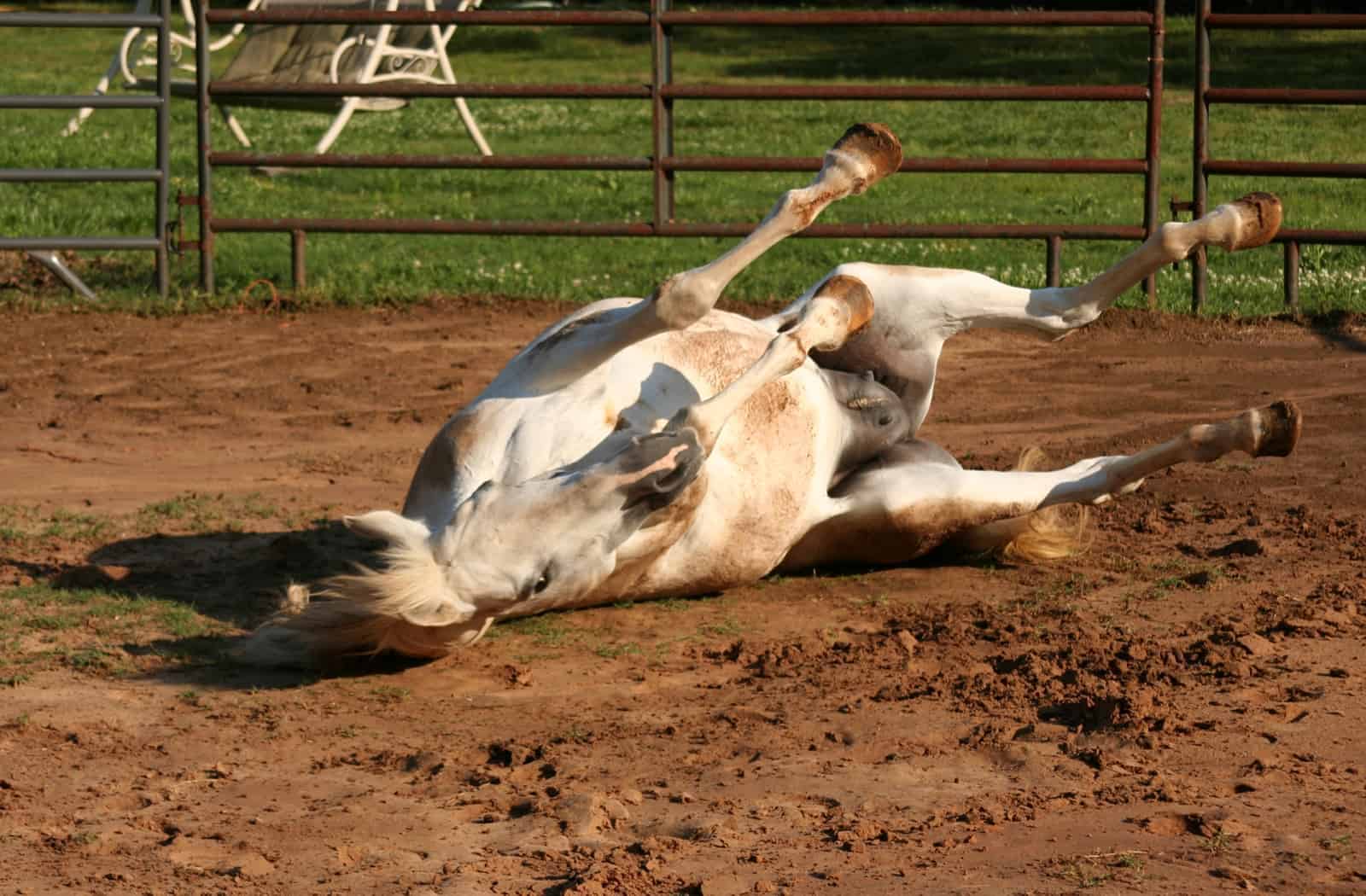With Quick Attention, Colicky Horses Often Recover

In horses, colic is an ambiguous, potentially dangerous, diagnosis.
“Colic is a description for abdominal pain,” says Annette McCoy, DVM, PhD, Dipl. ACVS, an equine surgeon at the University of Illinois Veterinary Teaching Hospital, in Urbana. “We use it assuming that the origin of the pain is intestinal, but technically the signs can indicate pain anywhere in the abdomen.”
Three Types of Colic
True intestinal colic can be divided into three types: gas colic, obstructive lesions, and functional obstructions:
- Gas colic is the simplest and most common type. Just as in other animals, excess gas production in horses can cause mild to moderate discomfort. Luckily this problem can be resolved medically fairly easily, and it carries a positive prognosis.
- Obstructive lesions are a bit more complicated. In these cases, something blocks the passage of digestive material through the gastrointestinal tract. Non-strangulating obstructive lesions, such as impaction (digestive material itself physically blocking passage), can often be managed medically. However, strangulating obstructive lesions—when an actual twist in the intestine prevents the movement of digestive contents—are surgical emergencies. The faster they are dealt with, the better the prognosis for the horse.
- Functional obstructions mean there isn’t anything actually in the way of the digestive contents, but something is causing the gut to not move as it should, so food is just sitting there.“Enteritis, which is inflammation of the intestine, is characterized as a functional obstruction,” McCoy says. “This situation can be managed medically, but if the pain is too severe the horse may need to be taken to surgery.”
When asked why horses get colic, McCoy laughed: “That is the million-dollar question! While we can’t always pinpoint an exact cause, we can identify certain risk factors.”
Essentially, any change in normal routine could disrupt a horse and prompt colic. Changes could include travel, restricted access to water, a change in food source or composition, and even weather. Therefore, changes in a horse’s routine should be introduced gradually, when possible.
“There is a lot we do not know about the pathophysiology of colic, but we can address the symptoms and treat the animal nonetheless,” McCoy explains.
Signs of Colic
Common clinical signs associated with mild colic include changes in eating habits (not eating, eating less, picking at food), kicking at the abdomen, flank watching (turning around and looking at hind quarters), and lying down more than normal. A more moderate colic can include more violent kicking and rolling.
“Since horses sometimes roll for fun, owners are often concerned about telling the difference between a playful roll and a painful roll,” McCoy says. “Horses that roll for fun will get down, roll a time or two, get up and shake themselves off and go about their normal activities.
“When rolling in pain, horses may often stay lying down, roll repeatedly, or when they stand up they will not shake themselves off and will stand with a dull depressed mentation,” she added.
Horses with the most severe forms of colic will roll and kick without regard for safety of themselves or those around them. Oftentimes abrasions and other physical injuries can be sustained from this wild flailing. A horse with this behavior is likely experiencing a medical emergency and needs to be seen by a veterinarian immediately.
What steps owners should take if they suspect their horse has colic vary depending on the severity of the signs.
Treatment Speed is Key
“If the horse is not exhibiting violent signs, take a moment to check surroundings,” advises McCoy. “Is there manure? Is the manure normal? Has the horse been drinking? If the horse is exhibiting very mild signs, you can try to walk them. Many owners with experience will also give a single dose of pain mediation.”
However, giving medication should be done with discretion. If signs do not resolve with this mild intervention or the horse appears to be getting worse, call a veterinarian immediately. A horse exhibiting moderate to severe signs needs to be seen as quickly as possible.
“You don’t want to wait too long to contact a veterinarian,” McCoy stresses. “Many mild issues that can be managed medically may need surgical intervention if left for too long.”
However, 75% of colic cases seen in the field will respond to simple medical treatment. With quick and appropriate medical attention, prognosis for a colicky horse can be quite good.
McCoy recommends referencing the REACT guidelines published by the University of Nottingham or the University of Guelph’s Colic Risk Rater to learn more.
If you have questions about colic, contact your local veterinarian or the Veterinary Teaching Hospital’s equine service.
Written by:
University of Illinois College of Veterinary Medicine
Related Articles
Stay on top of the most recent Horse Health news with















